This year we are staying home in Monterey for the holiday season and welcoming family to our locale. That means hotel stays, restaurant dinners and outdoor activities. Our ten day weather forecast for the Monterey Peninsula shows no rain and temperatures in the mid-60s next weekend. This has been a gorgeously clear sky December on the central coast of California.
Many visitors come to Monterey for the Monterey Bay Aquarium on the famed Cannery Row. Here is my photo walk along the less touristed southeastern half of Monterey’s Cannery Row named after John Steinbeck’s 1945 novel.
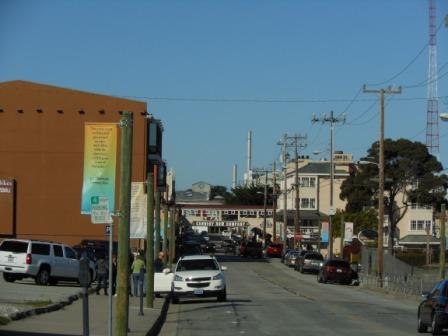
Cannery Row is a half-mile stretch of oceanfront road on the northwest end of Monterey. A century ago this parcel of Monterey developed canneries for processing sardines from Monterey Bay to feed the world. The street was called Ocean View Avenue up until 1958 when the name changed to Cannery Row in honor of the novel by Monterey County’s John Steinbeck. The road name is still Ocean View Blvd. in Pacific Grove where the town line begins just west of the Monterey Bay Aquarium.
The heyday of Cannery Row was during two decades from the 1920s to 1940s when over 3 million tons of sardines were caught in Monterey Bay and packed in the canneries of Monterey’s shoreline.
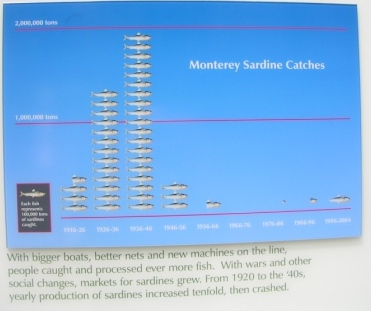
The sardines were overfished and the annual harvest plummetted in the 1950s. The canneries shut down one by one with the last working cannery closing in 1973. Over the years the building structures were demolished leaving behind only concrete pillar remnants in the sea.
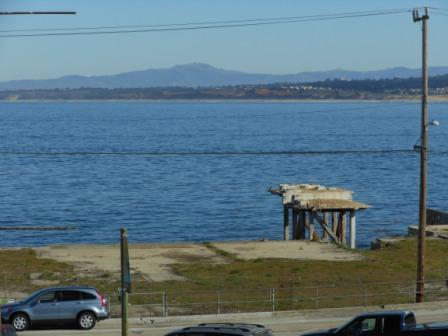
Cannery Row has seen improvements on the western portion of the road with the Monterey Bay Aquarium opening in 1984 and the InterContinental Hotel The Clement opening in 2008. These are the touristed sections of Cannery Row with restaurants, shops, bars and entertainment.
When I walk from my house down to Cannery Row I approach from the east. Cannery Row begins at San Carlos Beach park. The beach in this location is a popular scuba diving spot.
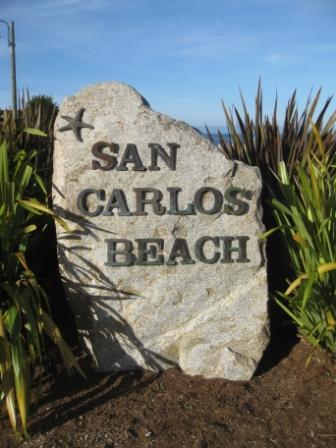
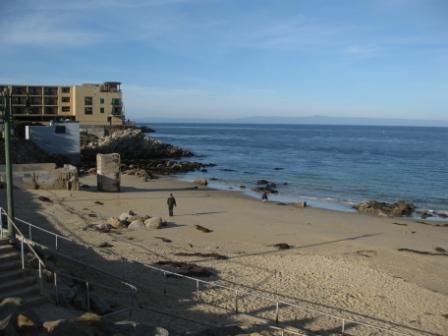
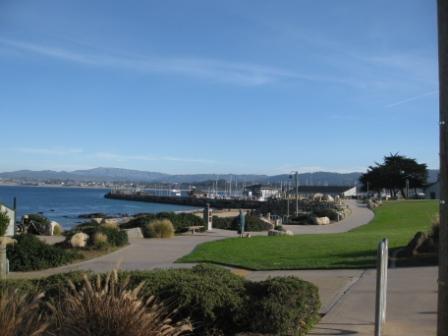
John Steinbeck called the grasslands of Mount Toro “the pastures of heaven”. The Coast Guard pier is a California sea lion hangout. I hear the barking sea lions at night when the noises of the city subside and the call of the wild drifts up the hillside to my home.
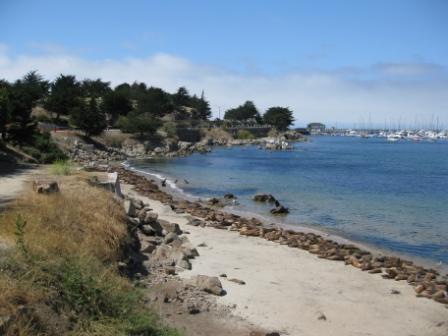
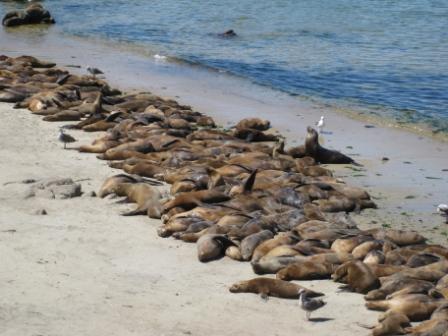
Above San Carlos Beach is a Cannery Divers Memorial for the workers who maintained the underwater pipes used to transport sardines from ships to the canneries.
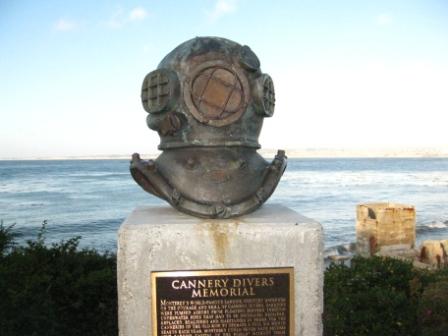
Cannery Row begins just past San Carlos Beach park past the whale mural in the photo.
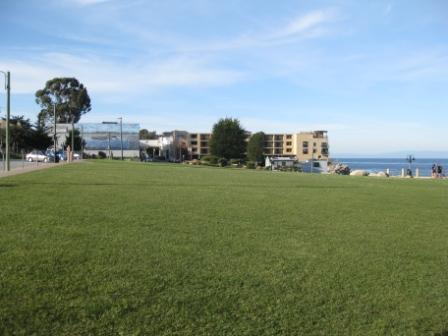
The eastern portion of Cannery Row is mostly unchanged over the past 30 years, except for the development of two hotels including the beautiful Monterey Plaza Hotel (Stash Hotel Rewards partner).
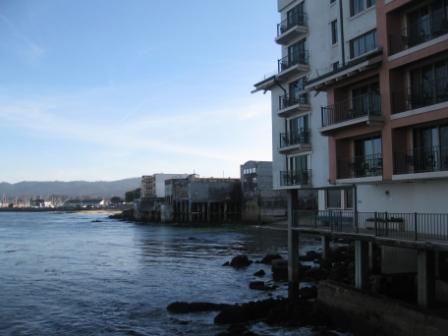
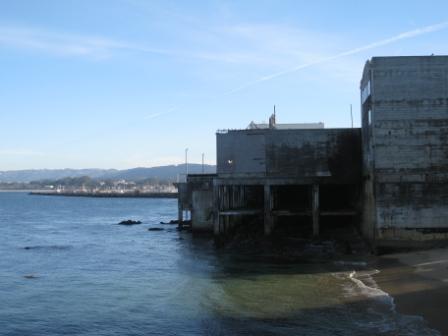
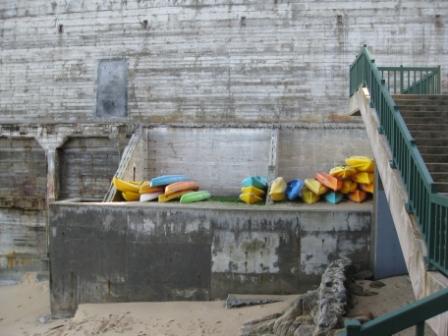
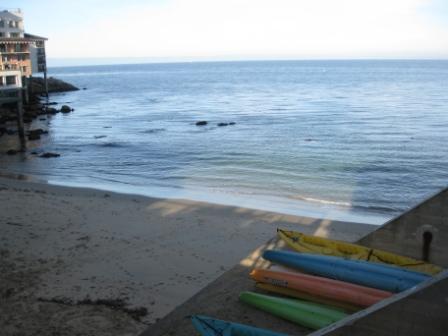
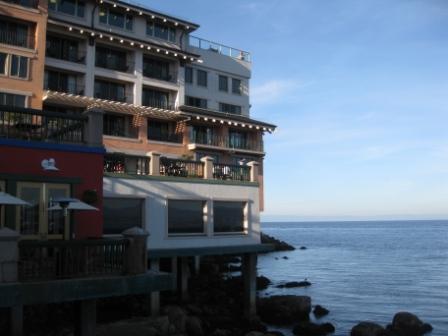
The top floor of the Monterey Plaza Hotel has a spa tub on the deck with great ocean views.
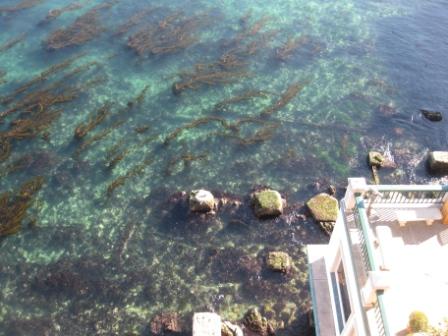
Monterey Bay Aquarium has a bull kelp display in a two-story tank. If you have kids who like to mess around with seaweed you will learn why it is called bull kelp when one of the kids smacks the other with the slimy whips washed up on local beaches.
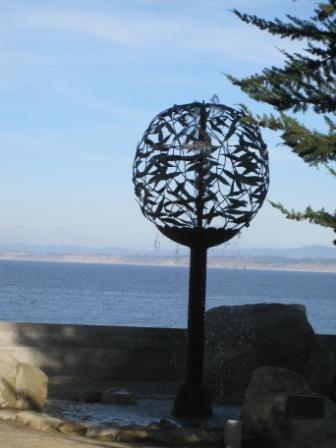
When I was a teenager in the 1970s the Monterey Coastline Path was unused railroad tracks from Fisherman’s Wharf to Cannery Row. The dirt path beside the tracks was rugged and dusty. The benches, paved bike path, tourist guide signs and info panels and art were all added in the past 25 years.
At home he feels like a tourist
He fills his head with culture.
Gang of Four – “At Home He’s a Tourist” (1979)
The Chart House restaurant has been there as long as I can remember. A landmark on Cannery Row. And nothing else beside it for as long as I can remember.
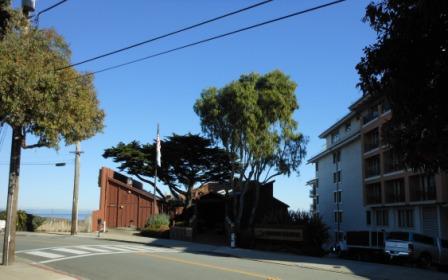
The empty lots of Cannery Row have puzzled me most of my life as I wondered why a world-famous stretch of coastline by name had, for decades, so little to offer tourists.
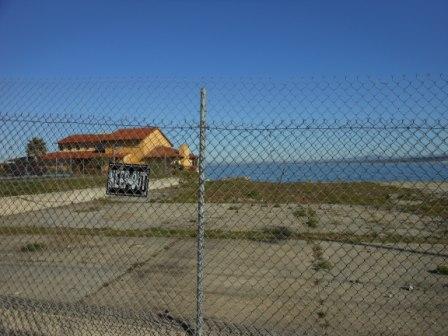
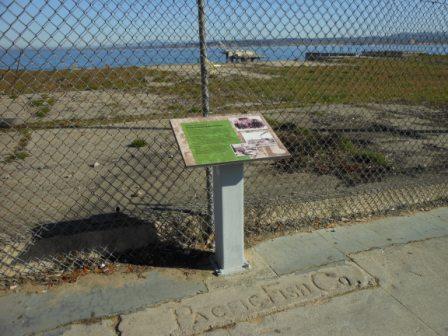
The sign tells how the first cannery on Cannery Row was started in 1902 by Otosaburo Noda, a Japanese immigrant who moved his abalone canning operation from Point Lobos to Ocean View Boulevard, Monterey. He and partner Harry Malpas started the Monterey Fishing and Canning Company. The company was bought out in 1907 and renamed the Pacific Fish Company. In 1926 the name changed to the California Packing Corporation.
Cans were shuttled on overhead conveyors from the canneries to the rail cars on the tracks that are now the walking and cycling path. Overhead conveyors are now in use as pedestrian crossings across Cannery Row.
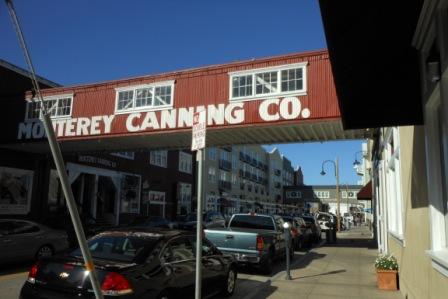
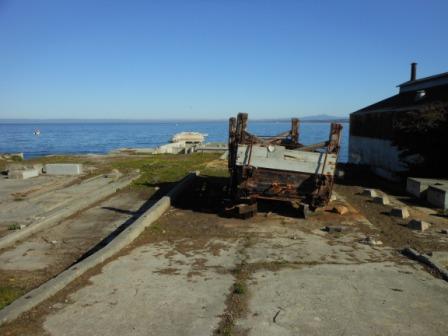
This post covers the lesser developed portion of Cannery Row. I’ll follow up with another post to show the tourist sections of Cannery Row and the beautiful sea views from the coastal path in Pacific Grove.
Related Posts:
Cannery Row in Monterey: Photo Walk of hotels and restaturants (December 22, 2011).
Why visit Monterey and Carmel Highlands in December? (December 6, 2011) – Point Lobos photo walk.


9 Comments
Comments are closed.